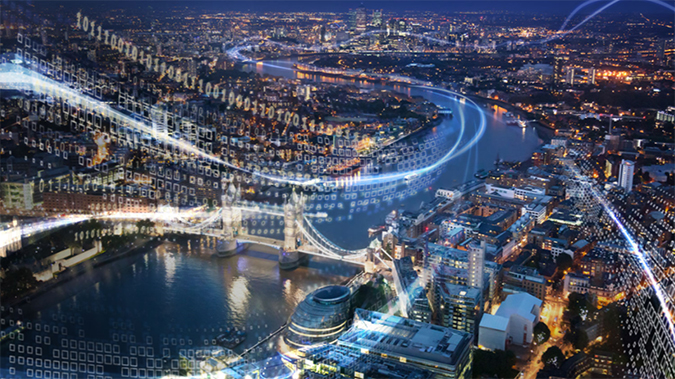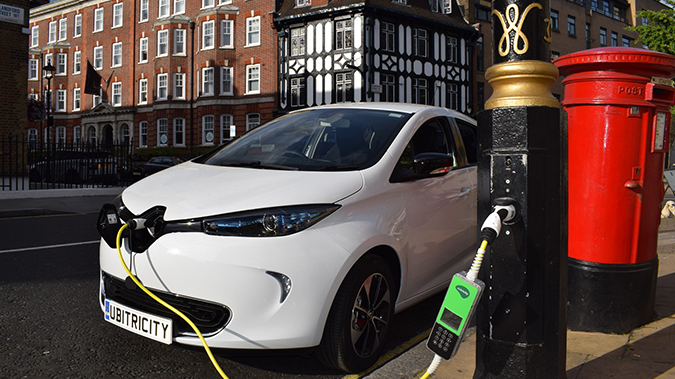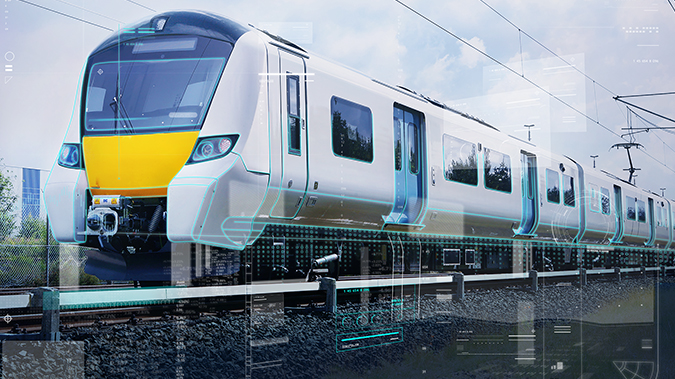
This blog is part of a four-part series on city and business action to reduce emissions in the capital.
Dirty air is causing a public health crisis in London and is a high priority for its Mayor. London exceeds the World Health Organization (WHO) limits for toxic air pollution, contributing to thousands of premature deaths in the capital and costing its economy up to £3.7 billion every year.
The transport sector is part of the problem and responsible for around 23% of emissions.
The London Environment Strategy aims to make London zero carbon by 2050. It includes important efforts to reduce transport emissions, reinforced by theTransport Strategy. The active support of the private sector will be critical to meet this ambition.
At Siemens, we are proud to be part of London Business Climate Leaders (LBCL), an initiative aligning the climate actions of business and local government. We are working with 10 other leading businesses – together employing more than 165,000 people in London – and the Greater London Authority to cut emissions levels in the capital. The group is supported by key sustainability NGOs: CDP, C40 and The B Team.
The partnership is focusing on clean transport, renewable energy, sustainable buildings, as well as circular economy and waste. On transport, we have all committed to switch to zero emission capable vehicles in London by 2025 and/or to support the development of EV charging by the same deadline.
Green Transport Transition

Siemens has been a long-time supporter of decarbonization in the city. We were involved in the implementation of London’s Congestion Charge, Ultra Low Emission Zones and EV charging infrastructure. We were therefore delighted to host the LBCL’s first workshop on transport this October, which brought the partnership together to plan joint action on this vital issue.
It was reassuring to see the similar challenges and barriers we are all faced with when transitioning towards low emissions vehicles, and enlightening to hear how each of us are taking different approaches to tackle them. We are at the start of this journey and learning as we go. The value of LBCL is clearly to progress faster collectively rather than making smaller steps alone.
The government has set targets for transitioning to electric vehicles, but for a company operating a fleet a complicated policy landscape hinders progress. We need to better understand demand for charging and address practical issues such as reimbursement of business miles for employees driving hybrid and electric cars. We also need better information on the range of vehicles available to navigate the fast-evolving solutions emerging on the market.
Businesses are well positioned to forecast the likely demand for charging by looking at telematics data to create heat maps. There is a huge potential in overlaying the operational footprints of the combined fleets to target where to invest in the rapid chargers and clear opportunities for making land available for charging hubs.
Private charging networks are one solution to ensure the availability of a reliable power supply for commercial fleet vehicles. EO Charging and Ikea joined us as special guests to present the business case for such a network. As Tesco pinpointed, we have a great responsibility towards public perception on EVs and we are willing to lead by example, whilst ensuring on-time deliveries commitments to our customers.

The group also considered reducing the demand for transport in the first place. We discussed pooling the best initiatives for staff cycling and public transport incentivisation. For instance, Morgan Sindall Group shared that a lift share scheme has reduced emissions by 9% countrywide. There is also scope for reducing the impact of transport. As UBM explained, by allocating time slots for lorries deliveries, they prevented lorry congestion and air pollution peaks around exhibition venues. A simple measure with immediate positive effects.
Moving Forward
A key thought that emerged was the influence we – as large commercial companies – have within our supply chains and how we can take advantage of our collective influence to move forward. This was discussed specifically in relation to availability of electric vehicles but there will be further opportunities to look at mapping supply chains (upstream and downstream) for other targets on renewable energy, energy efficiency, and circular economy and waste.
In summary, the London Business Climate Leaders transport workshop highlighted a breadth of knowledge and reinforced the group’s strong commitment to action with many valuable suggestions put forward for collaboration. Initial steps include mapping the group’s needs for low emission fleets and its transport supply chain, so we can identify pressure points and opportunities for joint action. By working together, we are confident that we can do more, faster, to help transition to a low carbon future for London.
